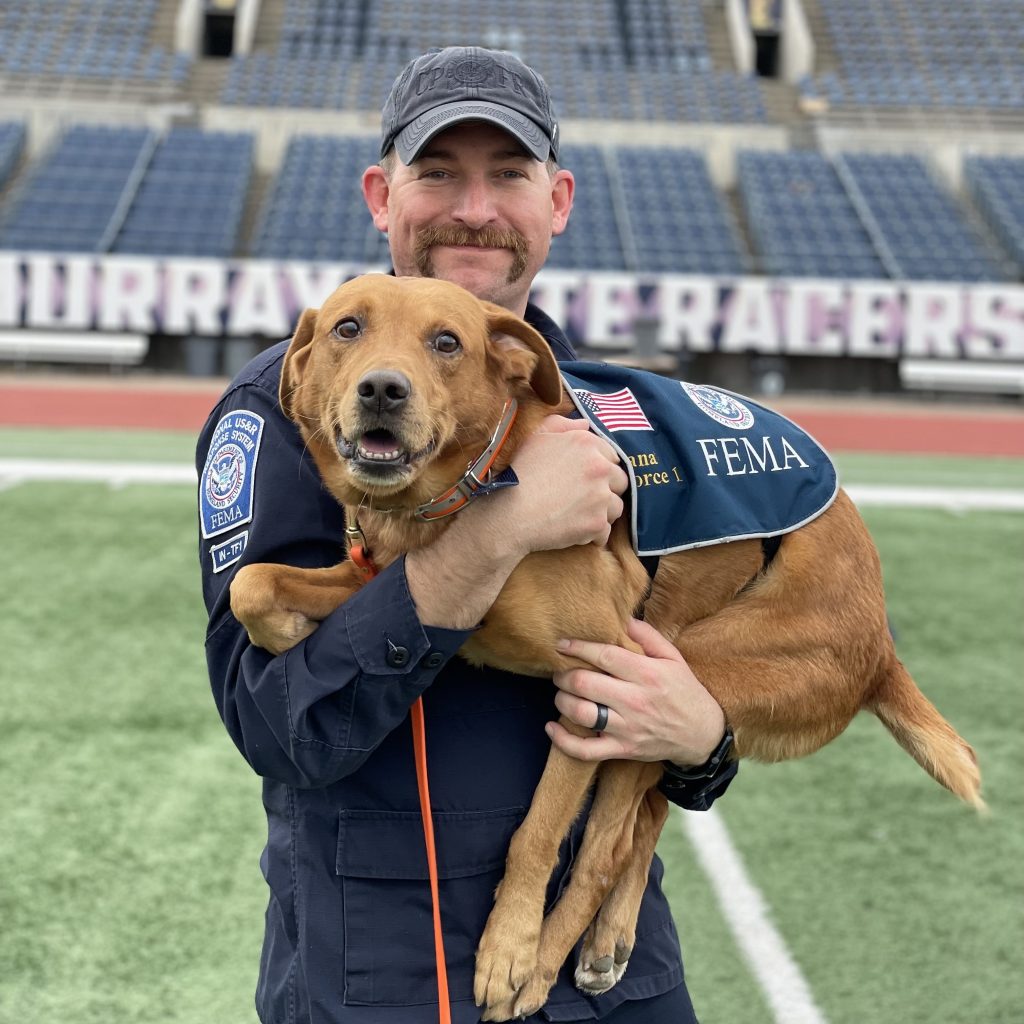Spending 22 days in Florida and North Carolina sifting through the destruction of Hurricanes Helene and Milton was yet another call to service by Crown Point Fire Rescue Assistant Chief Ryan Cusack and his search-and-rescue dog Jake.
They left for Florida on September 24 and returned home on October 15. After completing their work in Florida, they headed up to North Carolina to help find people who were either trapped or deceased. Unfortunately, Jake uncovered one body, that of a woman who perished during Hurricane Helene.
They were wrapping up in North Carolina when Hurricane Milton hit, which sent them back to Florida to help with the response efforts there. Both dog and handler have conducted many missions after natural disasters, but what they witnessed was stunning in the extreme amount of destructive force the hurricanes brought.
“There were some places that I would equate to severe thunderstorm damage you would see in the Midwest, and then other areas along the coast were really badly affected by flooding and storm surge,” Cusack said.
In Florida, he saw areas with sand piled three feet high on the roadway and high up against buildings. There were neighborhoods with buildings completely destroyed by the storm surge along with the wind and the waves.
“North Carolina’s damage was all from flash flooding and landslides,” he said. “There were massive debris piles that were a combination of logs, rock, mud, cars and homes. The force would completely disassemble a home and leave it piled up, along with the logs and the rock mud on the riverbank. We searched all those areas where the debris piles existed, looking for those who were missing.”
Surveying Fort Myers Beach, Florida with Jake, Cusack was stunned at the extreme amount of damage produced by a 15-to-30-foot storm surge.
“Water can be an incredibly violent and powerful force, and we saw that in North Carolina, where instead of it being a storm surge being pushed by a hurricane, this time water and mud collected on the mountain sides and turning into flash floods,” he said. “Water was being pulled down by gravity, and as it accelerated and gathered more debris it would turn vehicles into literally tubes of metal. It didn’t just flatten cars. It looked like vehicles had been taken to a junkyard and put into a compactor.”
Cusack is one of 80 people assigned to Indiana Task Force One as a canine search specialist. When not looking for survivors, he and Jake teamed up with other dog handlers on various assignments where a canine’s eyes, ears and nose are needed.
Having launched their mission in Pensacola, Jake followed his nose across Florida panhandle and down to Clearwater near where the hurricane had made landfall. Deployed in in the Blue Ridge Mountains of western North Carolina, they worked much of McDowell County.
“In the foothills around Mount Mitchell, the creeks are typically five feet wide, clear, very beautiful bubbling brooks in the mountains,” Cusack said. “And all of a sudden they are 100 yards wide, carrying all the mud and debris. It turned bad very, very quickly.”
Jim Masters is a freelance reporter for the Post-Tribune.


